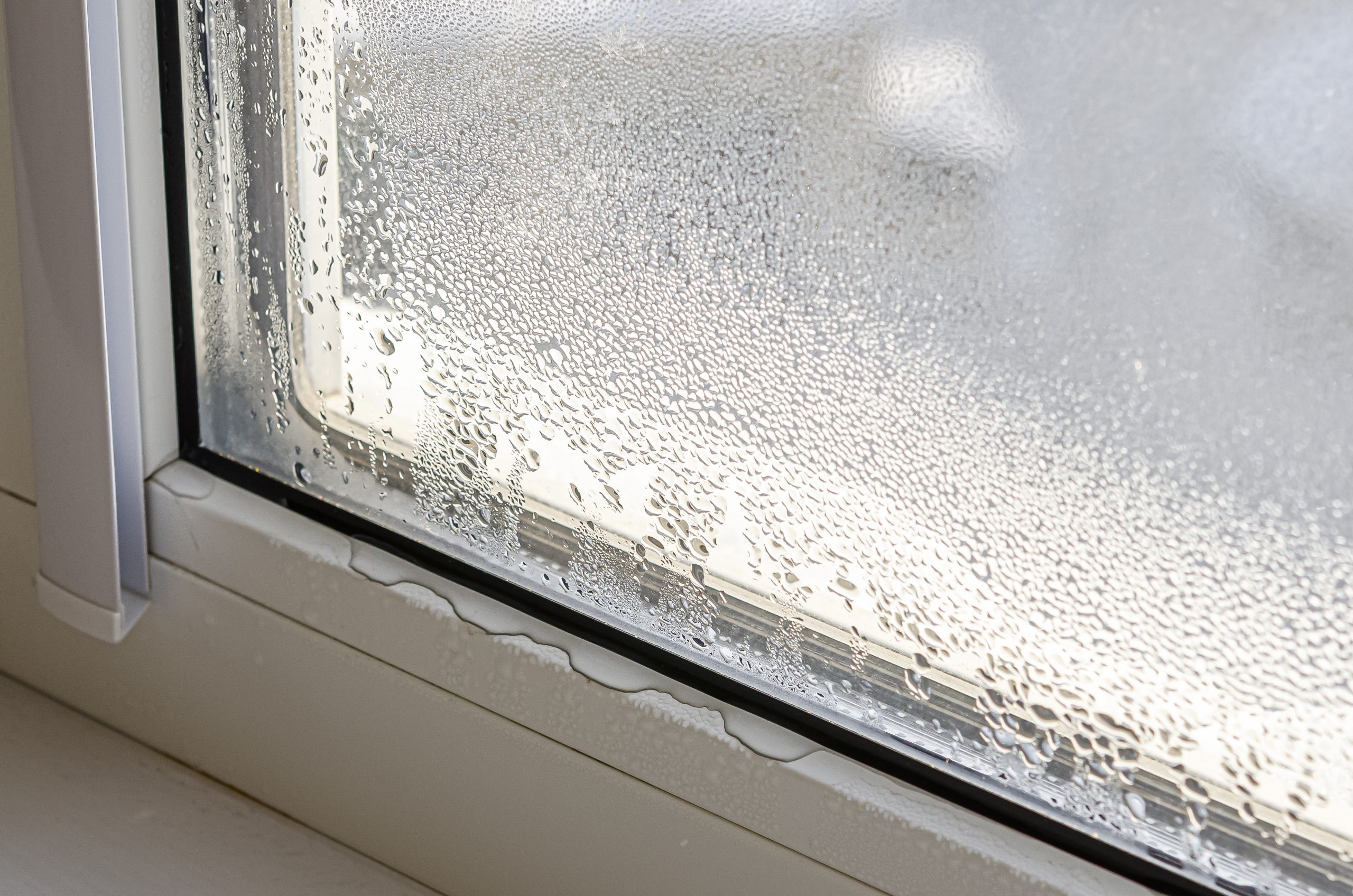Written by Ben Waddington, Regional Practice Leader, Building Science & Sustainability at Pinchin Ltd.
In western Canada, there’s an ongoing problem in some homes known as Attic Rain. I’m certain it’s not limited to the west, but this is where I’m from and as a building science professional, I get asked about it constantly. I’ve read a few CBC News articles (links below) over the years about this growing issue, but they never seem to tell the full story or provide a solution. With Calgary recently coming out of a substantial deep freeze, I wanted to explain what Attic Rain is, address some of the misconceptions I’ve heard and provide you with some recommendations.
What is Attic Rain?
Attic rain is a wintertime problem that occurs when warm moist air from inside your home or building leaks into a cold space above, like an attic. The moisture from the warm air freezes on the underside of the roof sheathing. When a thaw occurs, the ice that’s accumulated melts and leaks down into the building in a way that makes you think you have a roof leak.


Why is Attic Rain more common in newer homes?
In the 2015 & 2017 articles, both a builder and a building envelope consultant make the argument that Attic Rain is more commonly seen in newer homes. This is because newer homes typically have more ceiling penetrations (think pot lights, speakers, and bathroom fans). Further compounding the issue, is that most new homes are two stories or higher. It is not because new homes do a better job containing warm air and moisture than old.
Each fixture in the ceiling may have a small hole, maybe the size of a credit card. The combined area of all those holes adds up! The holes allow warm air to rise directly into the attic space. With regards to the height, the increase in height promotes the stack effect (the process that causes chimneys to move smoke up and out). The taller the building the bigger the pressure change and the faster the air will leak through your ceilings. A warm light bulb in a pot light fixture will heat the air further, just at the last second, and can amplify the issue.
Is condensation on windows a warning sign of Attic Rain?
In the 2022 CBC article, a home inspector indicated that condensation on windows was a warning sign that the interior humidity was too high. Unfortunately, condensation on your windows is not an effective warning that you will likely experience attic rain. Condensation levels on windows can be affected by the presence of blinds, bad installation, or just poor performing windows.
There are three levels of humidity that people can feel: too dry, comfortable, and damp/humid. People will feel too dry when the interior relative humidity (RH) is below 30%. They will feel dampness above 60% RH. The sweet spot is to be around 40% RH. A lot of people say turn down the humidity when it’s cold. This will help, a bit, but for a new home I feel you’ve paid to be comfortable year-round. As such if you have problems with the condensation or attic rain at an indoor relative humidity of 40%, then there is something else that needs to be addressed.

What about improved attic ventilation?
In the same 2022 article, the home inspector talks about using improved attic ventilation to reduce attic rain. Increasing attic ventilation is not going to stop the problem of Attic Rain, it can help a little but does not address the underlying source of moisture. Cold air cannot physically move the amount of moisture present in warm air fast enough. The best solution is to stop interior air from getting into the attic in the first place. In a home with an accessible attic, it can be done by crawling through the attic and sealing all the fixtures from the top side, then replacing any insulation you would have moved to access the fixture. It is awkward and challenging, but very effective.
What if I can’t access my attic?
If there is no access to the attic space, like with a flat roof, then options become more difficult and can get a lot more expensive. In these cases, something called a Dynamic Buffer Zone (DBZ) could be a good option. A DBZ uses a mechanical system to increase the air pressure in the attic so that interior air cannot leak out. Alternatively, you can remove the interior finishes, then change the assembly to ensure a complete air barrier to stop air leaks. Systems such as Aero Barrier might also be a viable option. Aero Barrier is a proprietary air leak sealing system that distributes an acrylic aerosolized sealant throughout the home that fills and effectively seals any air leaks and will work without removing interior air finishes.
The solution that will work best, will vary depending on your individual situation.
If you’re experiencing attic rain, or have a building envelope question that you need help with, feel free to reach out to me or contact one of our other Building Science & Sustainability experts at one of our 40 Pinchin offices across Canada.
CBC News Articles Referenced
‘Attic rain’ turns Calgary homeowner’s dream to nightmare | CBC News – 2015
‘Attic rain’ could plague more Alberta homes this winter | CBC News – 2017
What to watch out for in your home when the big thaw happens | CBC News – 2022